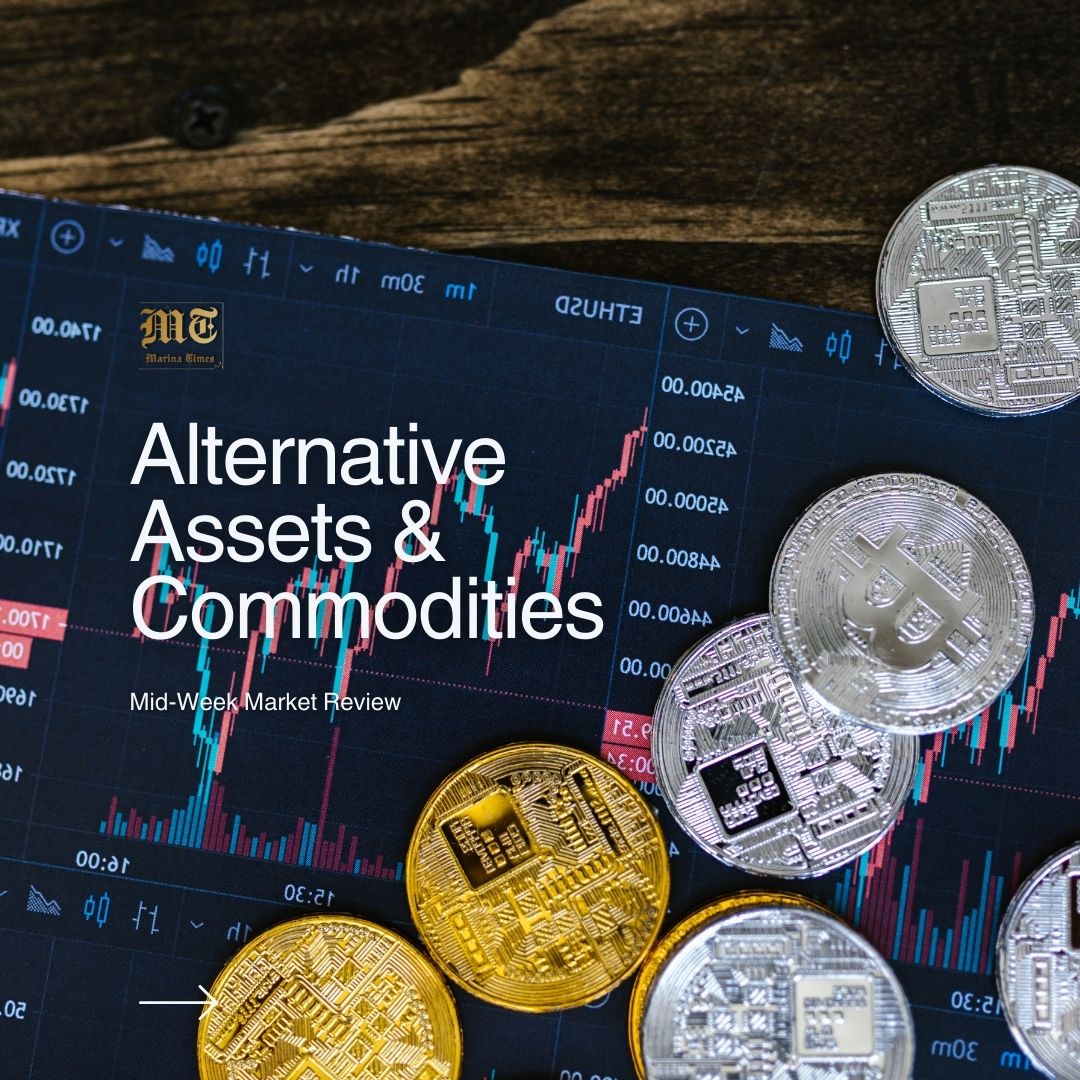

Crude oil prices have staged a dynamic rebound in recent days, riding a wave of renewed optimism over global trade diplomacy and enduring geopolitical tensions. The twin giants of consumption—China and the United States—are once again dominating the headlines, with their tentative tariff concession providing buoyancy to oil markets that had been weighed down by a mix of uncertainty and supply anxiety.
By Friday, the upward momentum held firm. Brent closed at $63.88 per barrel (up 1.08%), and WTI at $61.06 (up 1.29%), respectively, locking in their first weekly gain since mid-April. Fuelled by hopes of a constructive US-UK trade pact and the weekend’s high-stakes negotiations between Washington and Beijing, the market’s tone had unmistakably shifted from cautious to cautiously optimistic.
Trade, however, was not the only catalyst. Tensions in the Middle East continue to cast a long shadow over supply expectations. Yemen’s Houthi rebels, days after a supposedly brokered ceasefire, fired a missile toward Israel, intercepted by Israeli defences.
Compounding the uncertainty, the US slapped sanctions on two Chinese refiners accused of evading restrictions by importing Iranian oil. The move effectively cut off their access to crude supplies and forced them to rebrand their products. Meanwhile, US-Iran nuclear negotiations in Oman concluded inconclusively, with Tehran remaining defiant in its pursuit of uranium enrichment. A revived nuclear deal could reconfigure global supply dynamics, but for now, the status quo prevails.
On Monday, oil bulls had more to cheer about. After the US and China agreed to slash tariffs on each other’s goods—145% to 30% from the US side, and 125% to 10% from China—WTI and Brent rallied nearly 3%, touching $63 and $66 respectively. The 90-day truce provided much-needed breathing space and signalled some relief in trade tensions that had previously threatened to derail global growth.
Aramco, Saudi Arabia’s oil giant and OPEC’s leading producer, lent further support by projecting sustained demand strength for the remainder of the year, especially if the US-China trade truce solidifies.
Notably, Iraq, OPEC’s second-largest producer, plans to scale back exports to around 3.2 million barrels per day in May and June, down from 3.42 million in March and slightly below April’s average. This tightening could help offset the bearish undertones from OPEC+’s intent to increase output in the coming months.
Crude oil prices surged once more on Tuesday with Brent settling at $66.59 (+2.53%) and WTI at $63.63 (+2.73%), thanks to two unexpected positives: the continuation of the US-China tariff freeze and a modest inflation reading from the US Labour Department. The Consumer Price Index rose 2.3% year-on-year in April, the softest increase in four years, suggesting the Federal Reserve may not hasten interest rate hikes, thus sustaining economic momentum and energy demand.
Wednesday brought a mild pullback. WTI eased to around $63, with Brent softening to $66. API data showed a surprise build in US crude inventories, up 4.29 million barrels, and the largest increase in six weeks, although this was tempered by drawdowns in gasoline and distillates.
The market’s underlying tone remained buoyant, supported by the trade ceasefire, fresh sanctions threats against Iran, and a weakened US Dollar, which makes Dollar-priced oil more appealing to non-US buyers. Still, the expiration of the 90-day tariff truce looms large, and uncertainty surrounding the sustainability of these trade improvements continues to stay beneath the surface.
Beyond the headline movements, structural challenges persist. OPEC+ production is on the rise, with May output expected to swell by another 411,000 barrels per day. This upward revision could weigh on prices if demand doesn’t keep pace.
Simultaneously, reduced refining capacity in the US and Europe due to maintenance and underinvestment is tightening supplies of refined products such as diesel and gasoline. This growing reliance on imports heightens price volatility risks, especially during peak demand periods or unforeseen outages.
In addition, the US Treasury’s decision to sanction more than 20 companies involved in the illicit trade of Iranian crude to China adds yet another wrinkle. These measures form part of a broader effort to limit Tehran’s oil revenues while nuclear negotiations remain stalled.
Crude prices are climbing, sentiment is improving, and trade diplomacy has brought a temporary reprieve. Yet, beneath the rally lies a complex web of opposing forces: diplomatic fragility, shifting OPEC strategies, constrained refining capacity, and the ever-looming spectre of sanctions.
For now, the bulls have the upper hand, but with volatility baked into every barrel, the road ahead for oil remains anything, but straight.
The past week in the cryptocurrency world has been one of high stakes and historic moves. From Bitcoin’s fling with record highs to Ethereum’s rollercoaster ride, and groundbreaking institutional shifts, the digital asset landscape is evolving rapidly.
Here’s an in-depth analysis of the key developments and price movements that have kept investors on edge.
Bitcoin (BTC) has been navigating turbulent waters, with its price oscillating around the $100,000 mark. After approaching $105,000, BTC experienced a slight dip, currently trading at approximately $104,022. This fluctuation is attributed to investor caution ahead of U.S. inflation data releases and regulatory uncertainties, such as Arizona’s recent veto of crypto-friendly legislation.
Despite these headwinds, analysts remain optimistic. The recent U.S.-China agreement to reduce tariffs over the next 90 days is expected to strengthen global markets, potentially pushing Bitcoin’s price beyond $110,000.
Ethereum (ETH) has mirrored Bitcoin’s volatility, with its price experiencing significant swings. Currently, ETH is trading at around $2,614.22 The broader market’s mixed signals, including a 3% surge in XRP and an 8% drop in Dogecoin, reflect the ongoing uncertainty and divergent investor sentiment.
In a landmark development, Coinbase is set to join the S&P 500 index on May 19, 2025. This inclusion signifies a major step toward mainstream acceptance of cryptocurrencies, highlighting the growing integration of digital assets into traditional financial systems.
The regulatory environment in the U.S. presents a mixed picture. Arizona’s veto of a bill that would have allowed up to 10% of state funds to be invested in digital assets underscores the cautious approach some states are taking. Conversely, New Hampshire has embraced crypto, permitting officials to invest up to 5% of public funds in major cryptocurrencies and precious metals.
Date | Bitcoin (BTC) | Ethereum (ETH) |
May 7 | $102,000 | $2,500 |
May 8 | $103,500 | $2,520 |
May 9 | $104,000 | $2,540 |
May 10 | $105,000 | $2,560 |
May 11 | $104,500 | $2,550 |
May 12 | $103,800 | $2,530 |
May 13 | $103,344 | $2,543 |
Note: Prices are approximate and based on available data.
On a lighter note, we were wondering if Peter Schiff (an American economist, stockbroker, financial commentator, and author, known for his bearish outlook on the U.S. economy and advocacy for gold and silver investments) has any more bold predictions.

In another groundbreaking move that underscores its commitment to digital innovation, the Government of Dubai has partnered with crypto.com to enable cryptocurrency payments for government services. This initiative, formalised through a Memorandum of Understanding (MoU) signed on May 12, 2025, during the Dubai FinTech Summit, positions Dubai at the forefront of integrating digital currencies into public sector transactions. A big WIN!
As the crypto market continues to mature, investors should brace for ongoing volatility influenced by macroeconomic factors, regulatory developments, and technological advancements. The inclusion of Coinbase in the S&P 500 and the establishment of strategic reserves signal a growing institutional embrace of digital assets. However, regional regulatory disparities and market sensitivities to global events will continue to shape the outlook.
Stay informed and agile as we route the dynamic world of cryptocurrencies, where each week brings new challenges and opportunities.